At Singapore’s first meadery, we find out what it takes to sell craft mead here
Finding sweet success in fermenting honey
It costs a pretty penny to make; many don’t even know the category of alcohol exists, and demand for the product is nascent at best—we’re talking about brewing and selling mead (yes, that yummy golden liquid) in Singapore. But that hasn’t stopped homebrewer Simon “Bootlegger” Zhao from opening his own commercial meadery here anyway, the first on our shores.
The label, endearingly called Rachelle The Rabbit Meadery, after Zhao’s daughter, started in 2016. But the first batch of sellable brew only hit store shelves late last year. Now, you can find them in spots like Druggists, The Great Beer Experiment, Temple Cellars and Wild Barley Gourmet Shop. It’s available on their website too, and delivery to your doorstep is free.
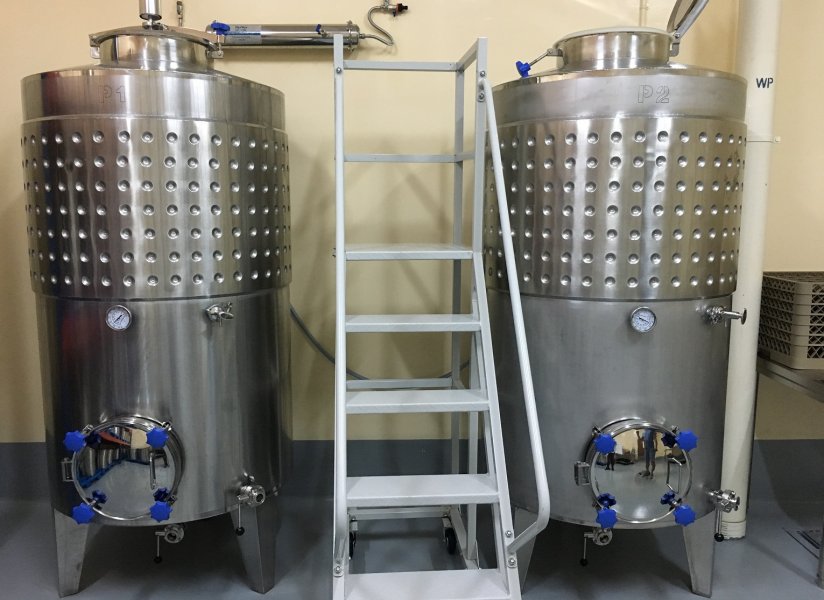
The meadery's primary fermentation tanks
But of all things, why brew mead? “I wanted to create an alcohol that can be kept for long. Beer can only be kept for a short time. But mead, it can be kept for 10 to 20 years easily,” he explained. Making wine here also didn’t make commercial sense, even though his meadery set up could technically be converted into a winery if he wanted to. And while mead is often called honey wine, Zhao says this is incorrect, since wine is made from grapes while mead is made from honey and water.
Letting curiosity get the better of us, we went down to check out his meadery—located where else but in far flung Tuas—and saw for ourselves what it’s like to own Singapore’s very first meadery.
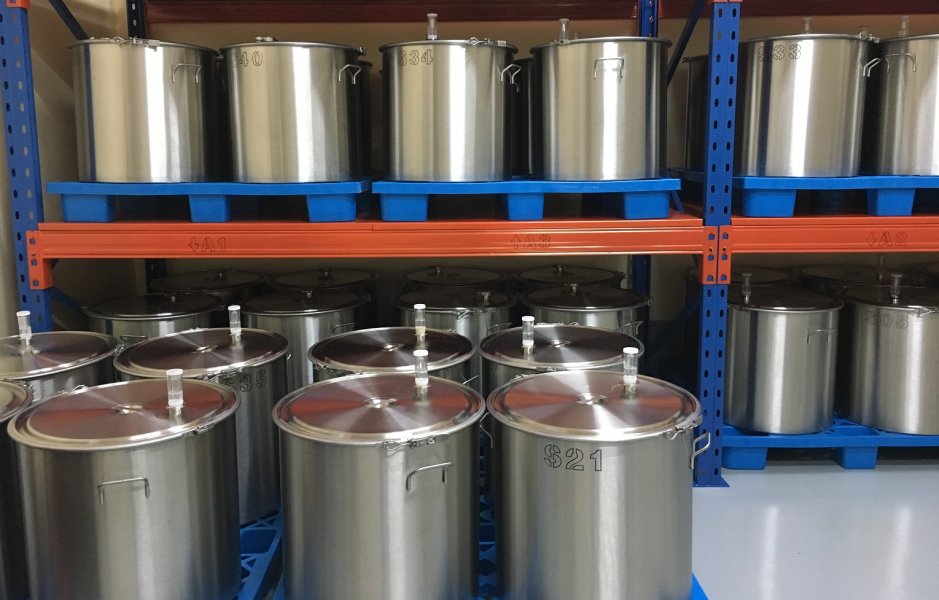
Secondary fermentation tanks, where the flavors get added
How did you get your nickname?
It took me very long to get my licence. After I’ve decided to start this business, it took me about a year and a half to two years to get all the required licenses to manufacture mead commercially. So during that period, I’ve been giving away my homebrew. You can legally brew at home, below a certain amount, so I’ve been sharing batches from my different recipes with friends and family to get feedback. During that time, it became a joke that I’ve become a bootlegger.
What were you doing before this and why move into brewing mead?
I used to be a uniform supplier. I supplied to stat boards like SPF (Singapore Police Force), SCDF (Singapore Civil Defence Force), and most of my business focused on government tendering via GeBiz. But I actually have a chemical engineering degree from NUS (National University of Singapore), and my passion lies in that field, as you can see from my homebrewing hobby.
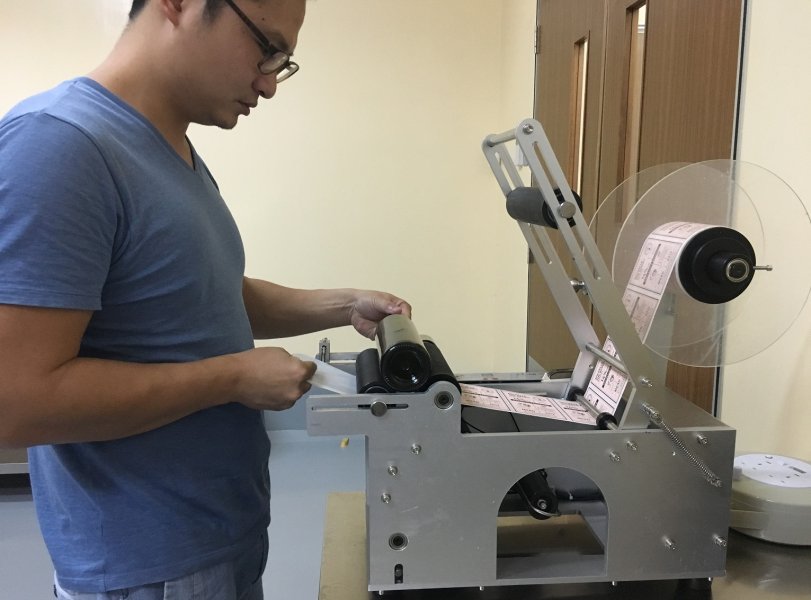
Zhao does everything in-house, including bottling, labeling and packaging
Is it hard to sell mead though, considering many don’t even know it exists?
Initially, yes. The first thing people ask when I approach them is whether the bottle I’m selling them is red or white, because the bottling resembles wine. But mead is getting more and more popular, perhaps thanks to Harry Potter and Game of Thrones mentioning it in their literature. Also in the States, as an extension of craft beer culture, mead is becoming more popular. They say mead in the U.S. now is where craft beer was 15 years ago.
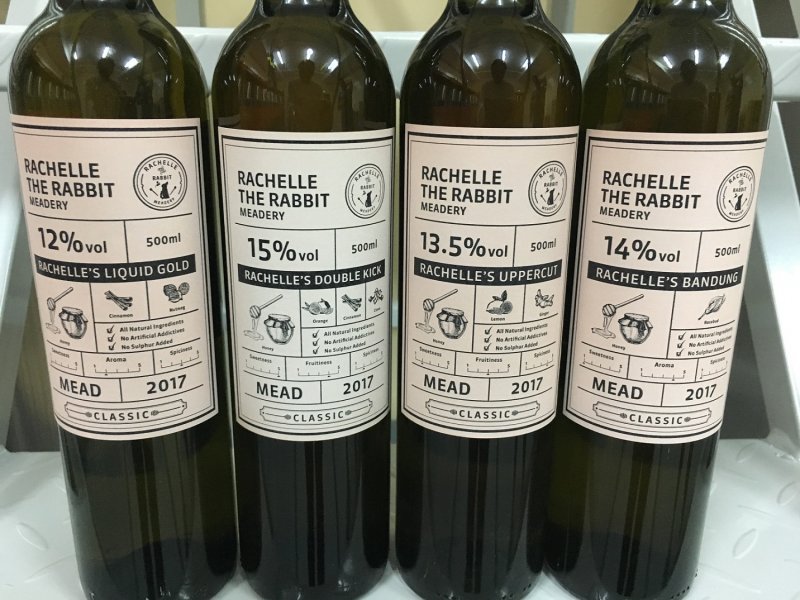
The four Rachelle The Rabbit Meadery meads available now
How do you explain to people what mead is?
It’s like a combination of wine and beer. The taste can be as elegant as wine, but at the same time, the flavor profile can be as versatile as beer just by adjusting the recipes. I guess that’s what fascinates me too.
I notice you've got a bandung flavor mead. How did that come about?
The idea came from my wife. She urged me to make a mead using rose as an ingredient, so that’s when I began experimenting using dried rose buds infused with honey. And the name came naturally after smelling the end product, as it reminded me of the bandung drink. As a Singapore meadery, we are also trying to make more locally-inspired flavors.
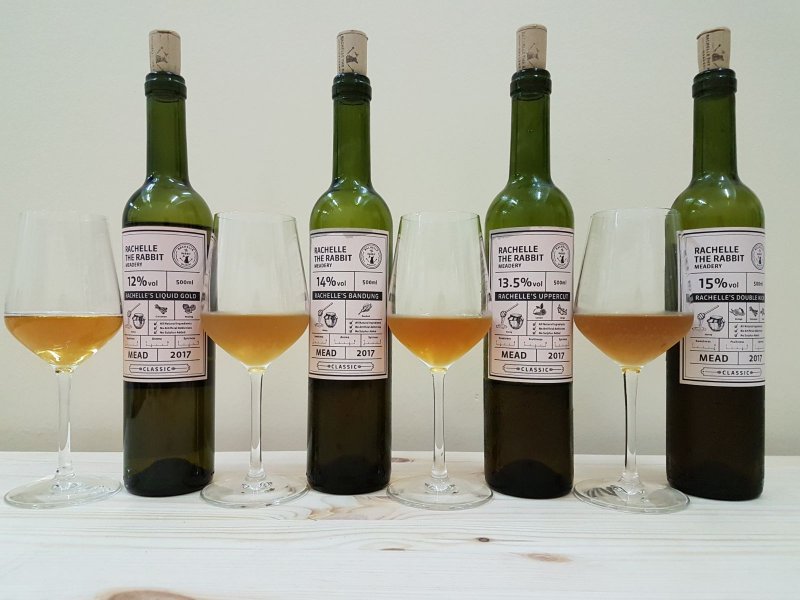
They do look like liquid gold
What about your best selling one, the Rachelle Double Kick?
For that, the side ingredients used are orange, cinnamon and cloves. This one is the sweetest at the moment, out of my four commercially released ones. I guess the reason why this is popular is because all the ingredients integrate together the best; you can say it’s the most well-blended compared to the rest. None of the ingredients stick out more than the others and it’s very smooth. The recipe is also a very ancient one, and those exposed to mead culture will surely encounter this recipe.
What is good mead in your books?
It has to taste nice.
Advertisement